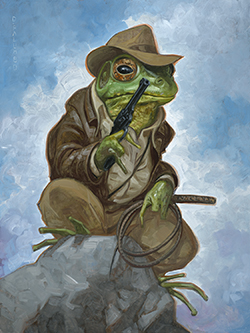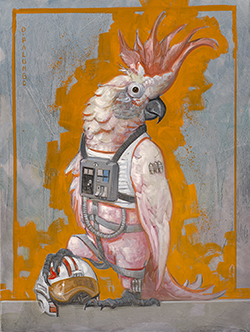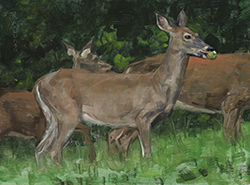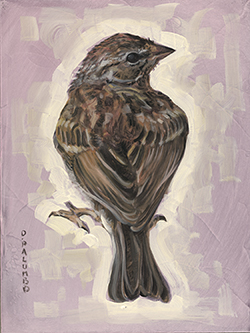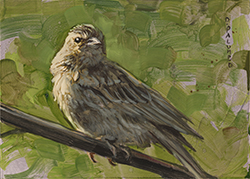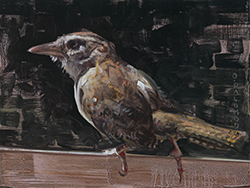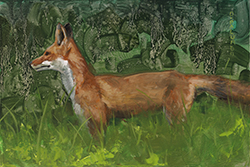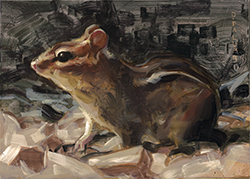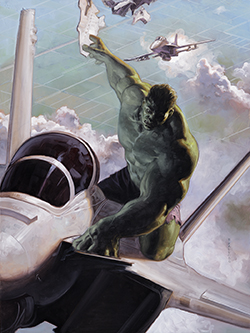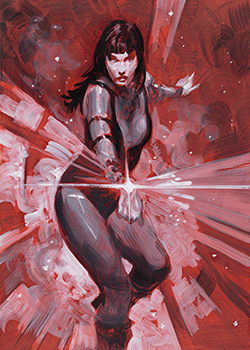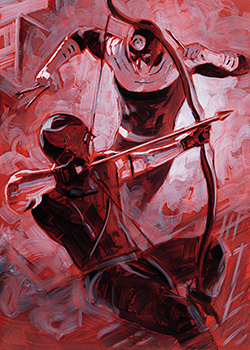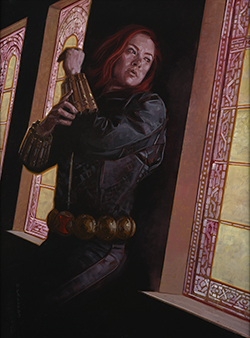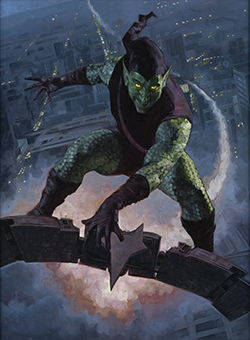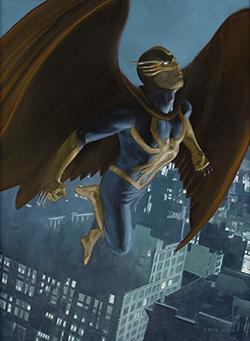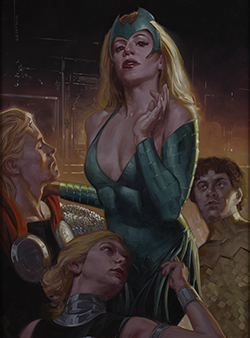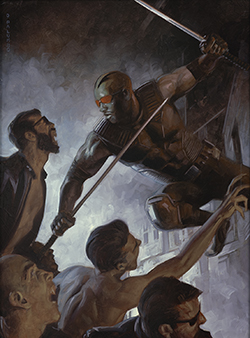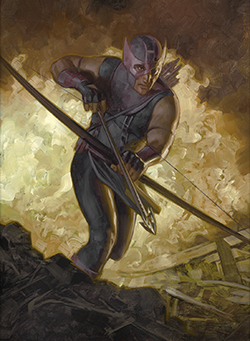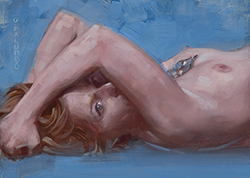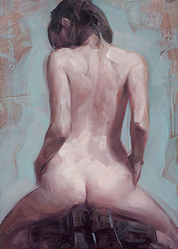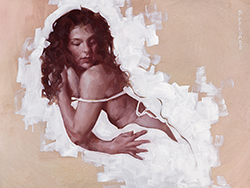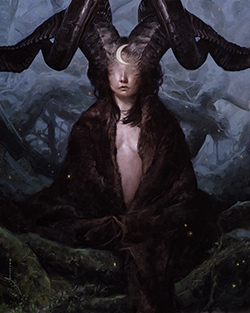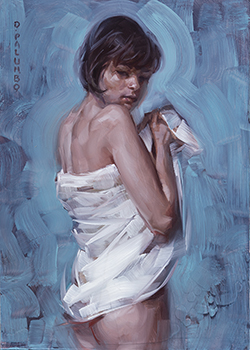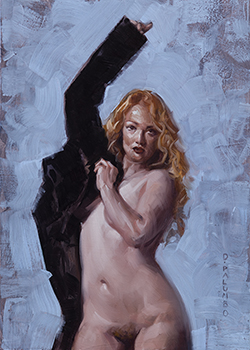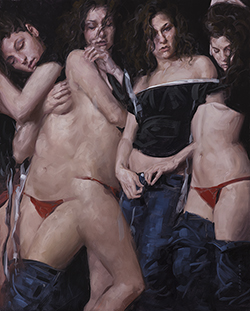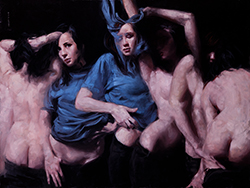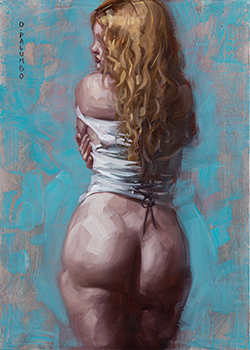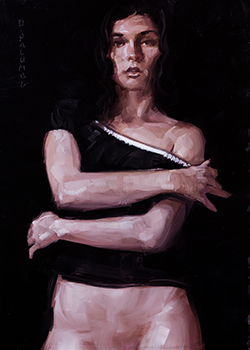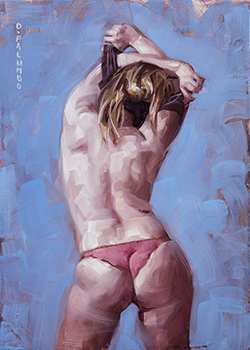| AVAILABLE WORKS | |||||||||||||||||||||||||||||||
BIOGRAPHY - David Palumbo (Born 1982)

Painter David Palumbo was born in 1982 in Marquette, Michigan in the state's upper peninsula, where his father worked as an English professor. Shortly after his birth, however, the family moved to Ohio where they lived for the next four years. By the time Palumbo entered third grade, the family had moved to Pennsylvania where they settled.
As children, Palumbo and his older brother Anthony were introduced to the visual arts in the form of the science fiction and comic books enjoyed by their father as well as the drawing classes that their mother took. Eventually, those drawing classes led to a career in illustration for Palumbo's mother. Her second marriage, to a fellow illustrator in 1994, also created an environment in which the teenage Palumbo daily observed an example of working artists who earned a living in the visual arts.
Not surprisingly, Palumbo chose to attend the historic Pennsylvania Academy of the Fine Arts (PAFA) in nearby Philadelphia after graduating from high school in Allentown in 2000. His older brother, who was already enrolled in the program there, recommended the studio-based curriculum that focused on drawing and painting. With a selective enrollment of approximately 250 students, and a historical record dating back to 1804, PAFA offered an education grounded in the classical precepts that were at the heart of visual arts training in Europe beginning in Renaissance Italy. Looking back, Palumbo notes that his years at PAFA provided him with a solid foundation for realist and figure painting.
While a student at PAFA, Palumbo also attended several summer workshops taught by the realist painter Burt Silverman at his upstate New York home. Although these workshops were short-term programs, Silverman proved to be a very good teacher who made important contributions to the young painter's education.
During his third and fourth year student exhibitions at PAFA, Palumbo was also introduced to the Artist House Gallery in Philadelphia, which was then owned by a former PAFA student who emphasized realist art in her gallery. For Palumbo, this was not only an opportunity to begin exhibiting his work professionally, but also a chance to learn about the art market and the gallery world from someone he trusted. He continued to work with Art House Gallery until 2013 when the owner retired.
With a sound academic education, and a modicum of knowledge about the commercial business of the art world, Palumbo began exploring illustration as a career shortly after his graduation from PAFA in 2004. He credits his mother and step-father for setting an example of artists making a living as illustrators, but also points to classic American illustrators such as J. C. Leyendecker (1874-1951) and contemporary artists such as Robert McGinnis and Sam Weber as significant influences on his development.
Palumbo quickly realized that illustration was a very competitive field, and that he needed to acquire business skills in order to succeed. For the next six or seven years, he focused on building his reputation as a freelance illustrator working for a variety of clients, including Marvel Comics. It was his relationship with Wizards of the Coast, LLC, however, that solidified Palumbo’s reputation as an illustrator. He was initially hired to design images for a one-on-one strategy card game called Magic The Gathering, and continued to develop the game images over several years. These evocative images in the increasingly popular game brought Palumbo’s work to the attention of many other potential clients. Night Shade Books in San Francisco, a freelance client for whom Palumbo had been working since 2007, asked him to serve as the art director for the publishing company beginning in 2010. As the painter recalls these early years as an illustrator, he notes that they taught him about working with clients, learning how to work within a corporate structure, and how to communicate effectively.
The success of his work as an illustrator was underscored by professional recognition from the Spectrum annual awards program in 2011 and 2013; Palumbo won a gold award for a book cover, and a silver award for a comic book cover in 2011, and another gold award for a book cover in 2013. In 2012, he received a Chesley award for gaming-related illustration from the American Society of Science Fiction and Fantasy Artists.
About four years after beginning his career as an illustrator, Palumbo began experimenting with a looser style of figure painting as an alternative to the very tightly drawn and detailed illustrations he was producing for his clients. Working with friends in the theater and dance community as models, he created a number of small figure paintings, generally about 5 x 7 inches. The small scale offered a manageable size for ‘after hours’ experimentation and ultimately led to new explorations in texture and paint; it also marked the beginning of Palumbo’s shift to a more painterly process.
By late 2011, Palumbo was increasingly frustrated with what he describes as the “uptight rendering style” commonly expected of fantasy illustration and realized that he had something different to offer as a painter. As he continued to develop his personal style, he emphasized not only figural realism, but also strove to suggest a narrative through mood and atmosphere, thus evoking a sense that there is a story to be told if the viewer is interested in imagining what might be implied in the images.
During this same time period, Palumbo was asked to participate in an exhibition at the Allentown Art Museum. Curated by Patrick and Jeannie Wilshire, At the Edge: Art of the Fantastic showcased 165 art works dating from 1797-2012; their goal was to increase awareness of what they dubbed "imaginative realism". The show opened in May 2012 and ran for six months. Palumbo was naturally pleased to be included in a museum exhibition, as well as very supportive of the concept that “imaginative realism” deserves to be further studied as an art historical genre in its own right.
In December of 2012, Palumbo’s work also came to the attention of an artist’s representative who approached him about his illustration work. That has resulted in new opportunities doing illustration work for larger clients such as The New Yorker and the Wall Street Journal as well as one of the artist’s favorites projects—a cover portrait of David Bowie for the Italian edition of Rolling Stone. His work today continues to blend illustration and painting in a personal conversation that strengthens and enriches both forms.
Janet Whitmore, Ph.D.
Artist Statement:
"Nudity is absent of sexuality by default. We provide that in our minds after the fact and according to the context of the situation. The degrees by which we, as individuals, will judge such a thing seem to be infinitely minute and varied, as are the reactions which will be provoked. My intention in the works contained in this series is to examine and walk that line. I enjoy painting portraits and nudes which not only celebrated the elegance of human form, but also touch on the positive and beautiful aspects of sexuality and confidence.
It is tremendously important to me that the work feel tasteful and honest and for the models themselves to feel sexy and self assured. I paint women who are individuals and not generalizations to better capture the intimacy and humanity of these private moments. Every model brings her own personality into the process which then leads to exciting new ideas and opportunities. After all, individual quirks are what make painting people far more interesting to me than painting objects and landscapes."

